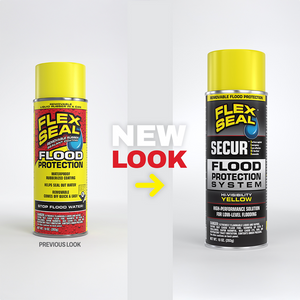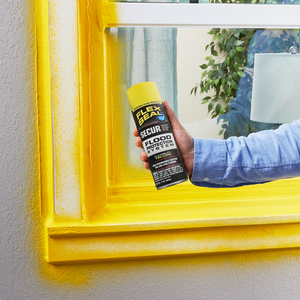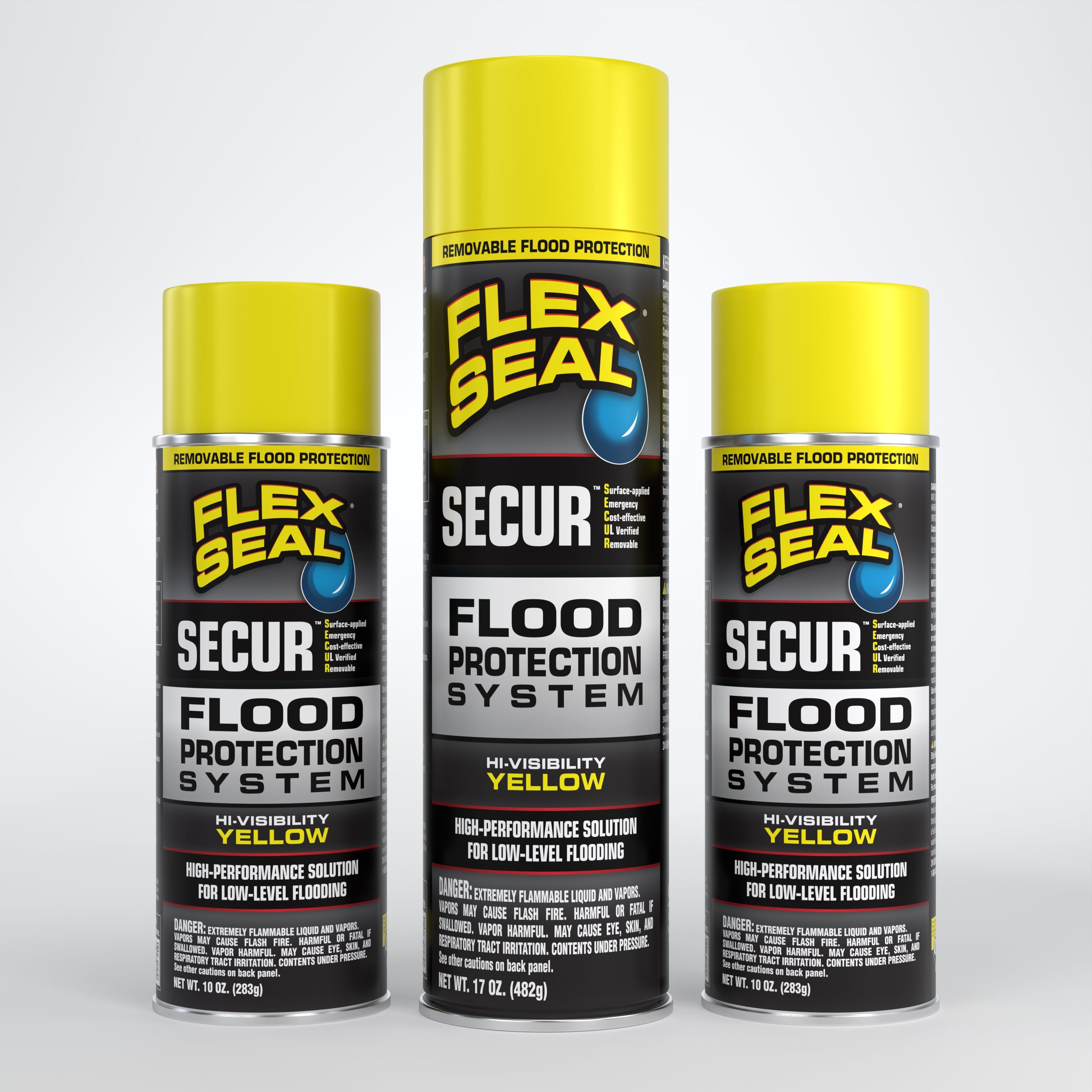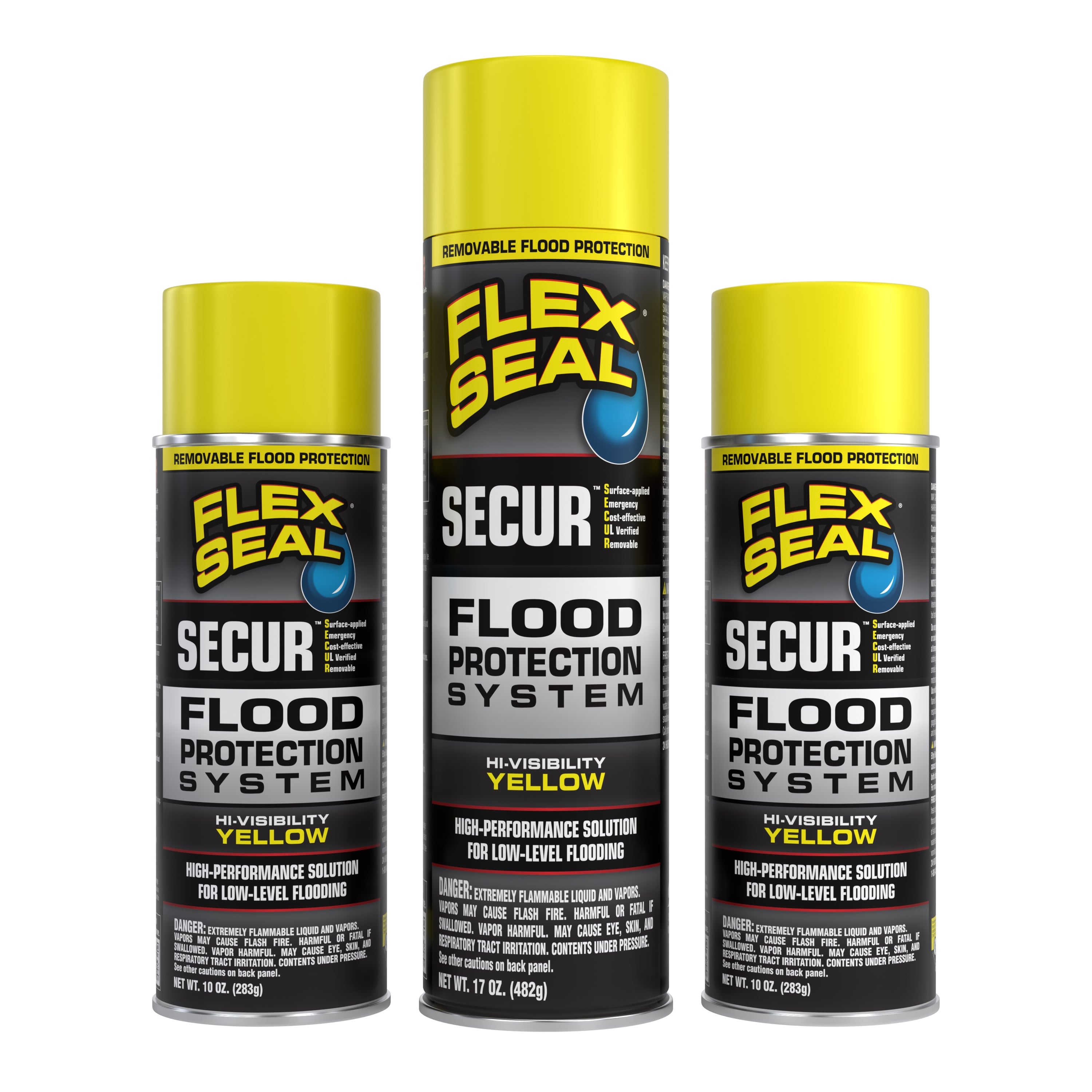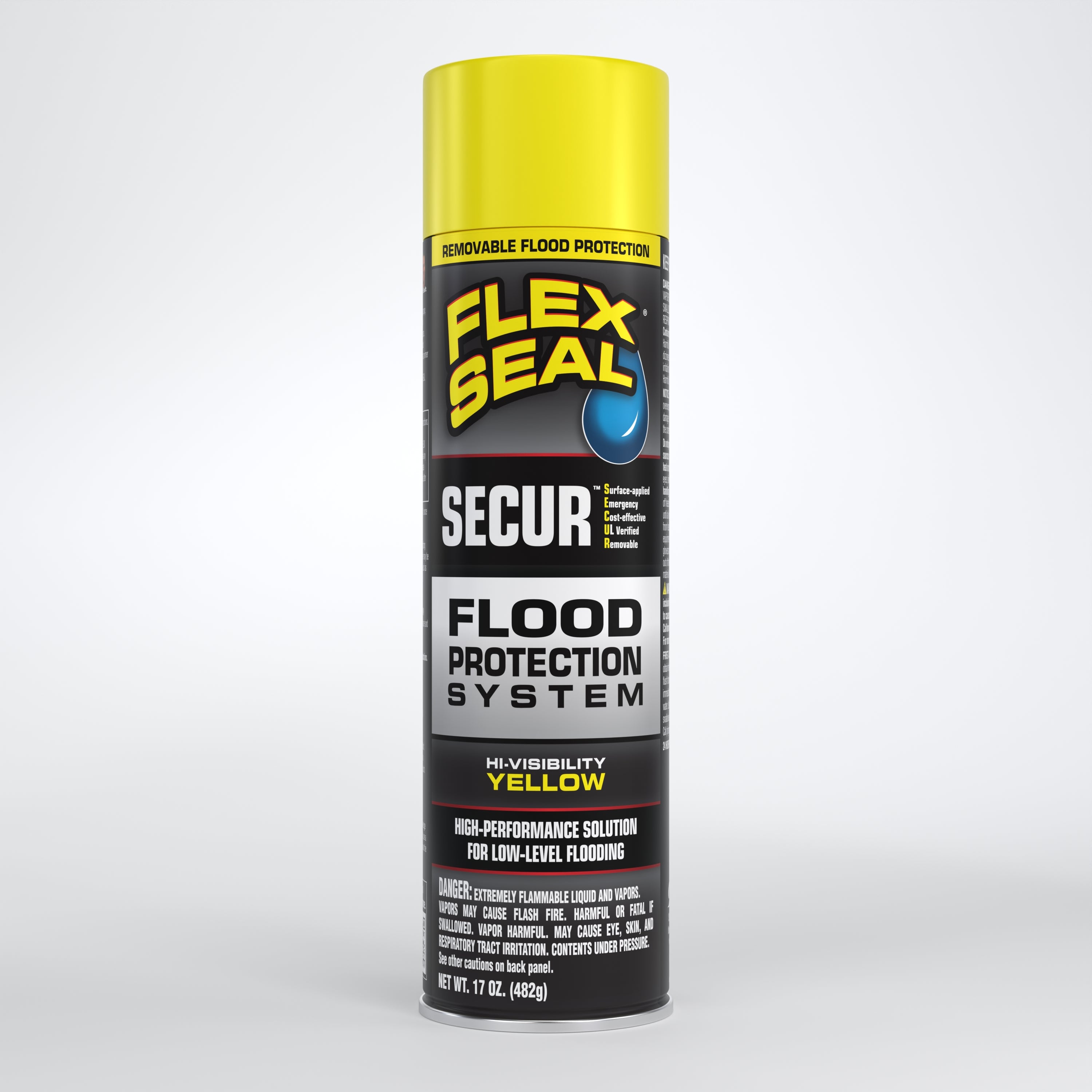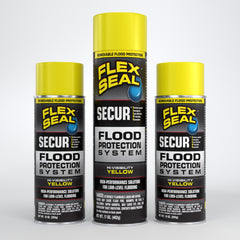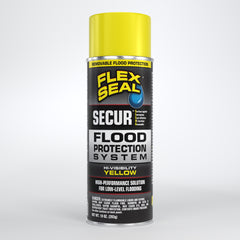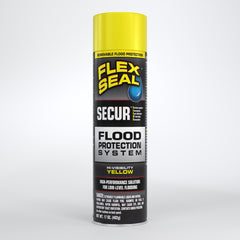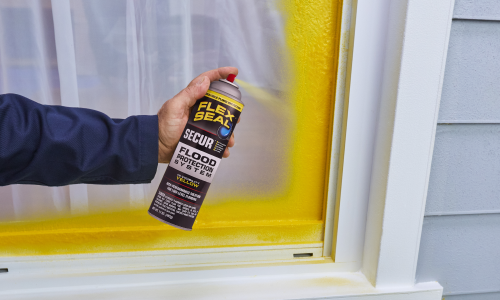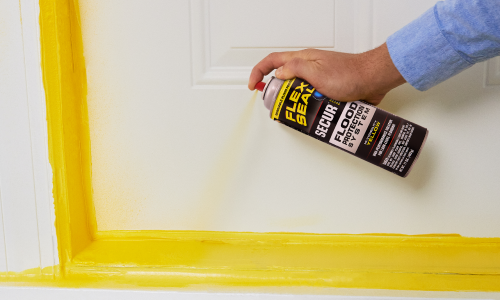
Removable, waterproof spray that helps stop low-level floodwater.
- $19.99
- $19.99
- Unit price
- / per
The SECUR Low-Level Flood Protection System utilizes Flex Seal Flood products, which are specifically designed to work TOGETHER to create multiple layers of super-strong, waterproof protection, and to be easily removed after floodwaters recede. They can help slow down or even stop low-level water from entering structures.
Flood Spray is used as a final coat of protection to fill any small openings or pinholes that may have been missed in place of Flex Seal Liquid (when flooding is imminent and there is not at least an hour for liquid to dry). When used as a final coat, apply Flood Spray on top of all previous layers of Flood Protection products. We recommend you use Flood Spray as a top coating on our other Flood Protection products. You can also apply Flood Spray to seal hard-to-reach areas, such as seams, windowsills, small openings, corners, irregular shapes, and more.

When used as directed, our Flood Protection Spray has been independently verified by UL Solutions to hold back 3ft of water for 14 days on gaps up to ⅛ inch. Tested in laboratory settings.
Patent Pending for Products and Uses.
California Residents:  WARNING: Prop 65 Warning(s)
WARNING: Prop 65 Warning(s)
DRY TIME
Flood Spray is ready to start holding back water in as little as 15 minutes. Dry time may vary based on temperature, humidity, and thickness of coat.
COVERAGE
The coverage for the 10oz Flood Spray, when applied 8 to 12 inches from the surface, is approximately 40 linear feet.
The coverage for the 17 oz Flood Spray, applying it 8 to 12 inches from the surface, is approximately 67 linear feet.
IMPORTANT INFORMATION
Always follow local warnings regarding evacuations. Depending on the age and type of construction, there may be areas that cannot be seen or sealed. Unsealed porous surfaces, such as concrete, can seep water during extended underwater exposure. Our Flood Protection products are NOT intended for flash floods, extreme winds or water pressure, to protect against flying or floating debris, or if there is structural damage to the building.
ADDITIONAL INFO
All of our Flood Protection products are Patent Pending for both products and uses. Made in Canada with globally sourced materials. Color of product is high-visibility yellow. For more information on UL testing, click here. 12% savings based on price per ounce, compared to our 10 oz size.
HOW TO USE FLOOD SPRAY
• Protective gloves, clothing, and eyewear are recommended.
• Use only on the exterior structures.
• Make sure the area being sealed is clean, dry, and free of grease, oil, and dirt.
APPLICATION:
• Shake the can for 30 seconds.
• Apply Flood Spray on top of Flood Paste or Flood Tape using a sweeping motion 8” to 12” from the surface.
• The coat of Spray should be wider and overlap the previous layer(s) of protection.
• Allow as long as possible to dry before floodwater arrives.
• Flood Spray is ready to start holding back water in as little as 15 minutes*.
IMPORTANT:
Coats that are too thick can cause bubbles, which could allow floodwater to enter. *Dry time may vary based on temperature, humidity, and thickness of coat.
REMOVAL:
Grab an edge and pull away from structure. Using a small pair of pliers may be necessary. If any residue is left on the surface from other Flood Protection products, use a stiff nylon brush, paper towel or rag with denatured alcohol to clean the area.
OFTEN PURCHASED WITH
VIEW ALL- $19.99
- $19.99
- Unit price
- / per
- $166.98
$189.87- $166.98
- Unit price
- / per







